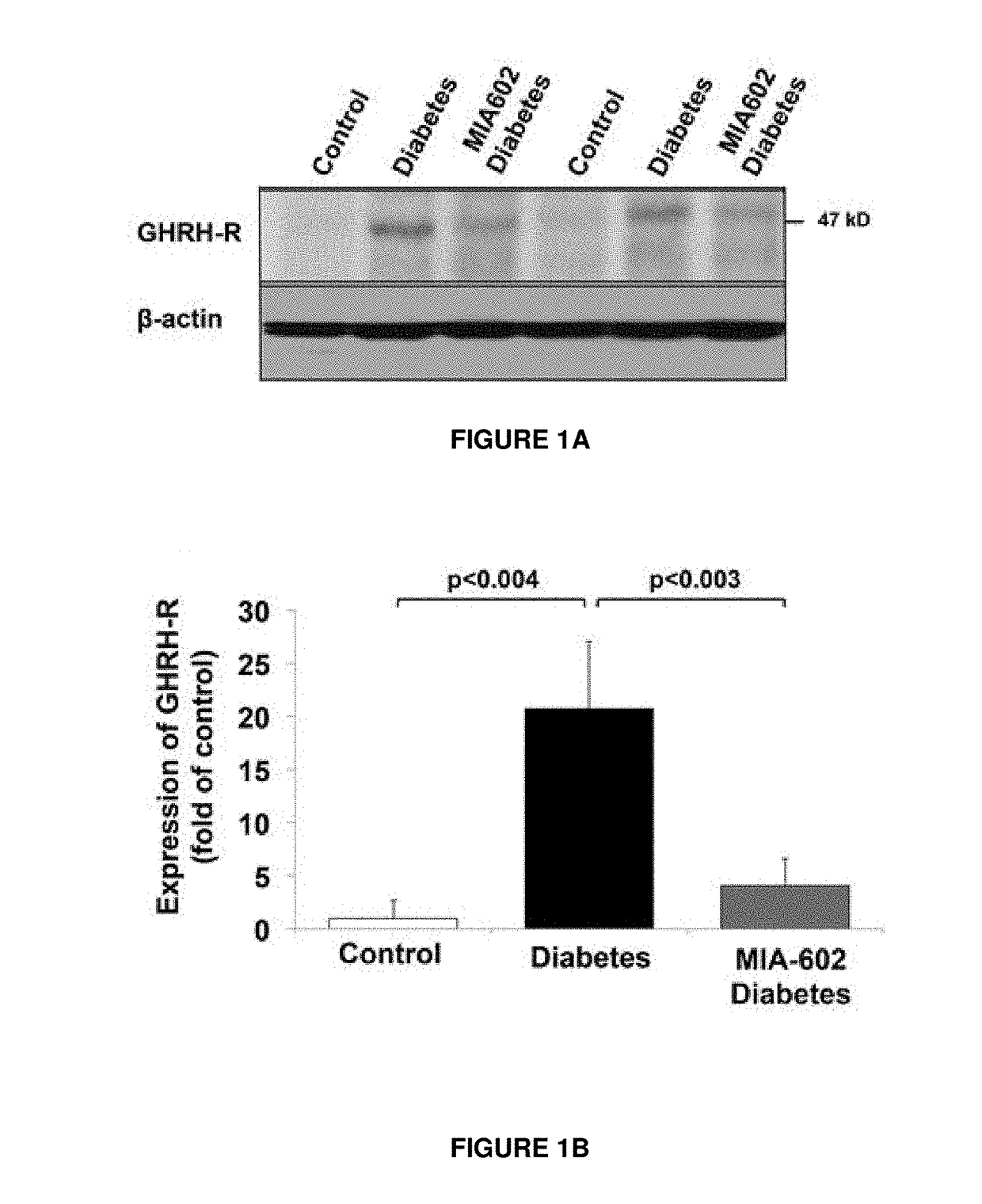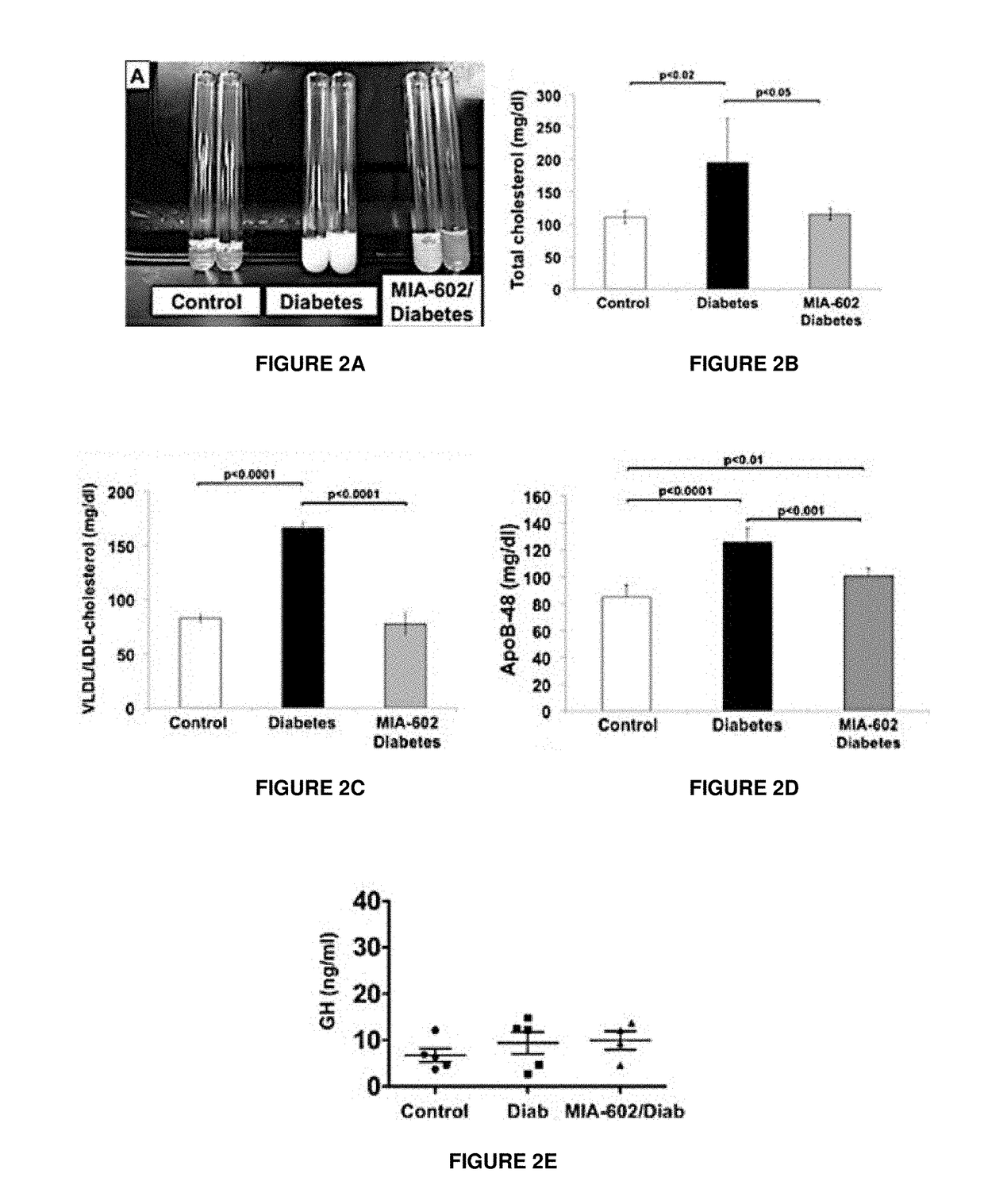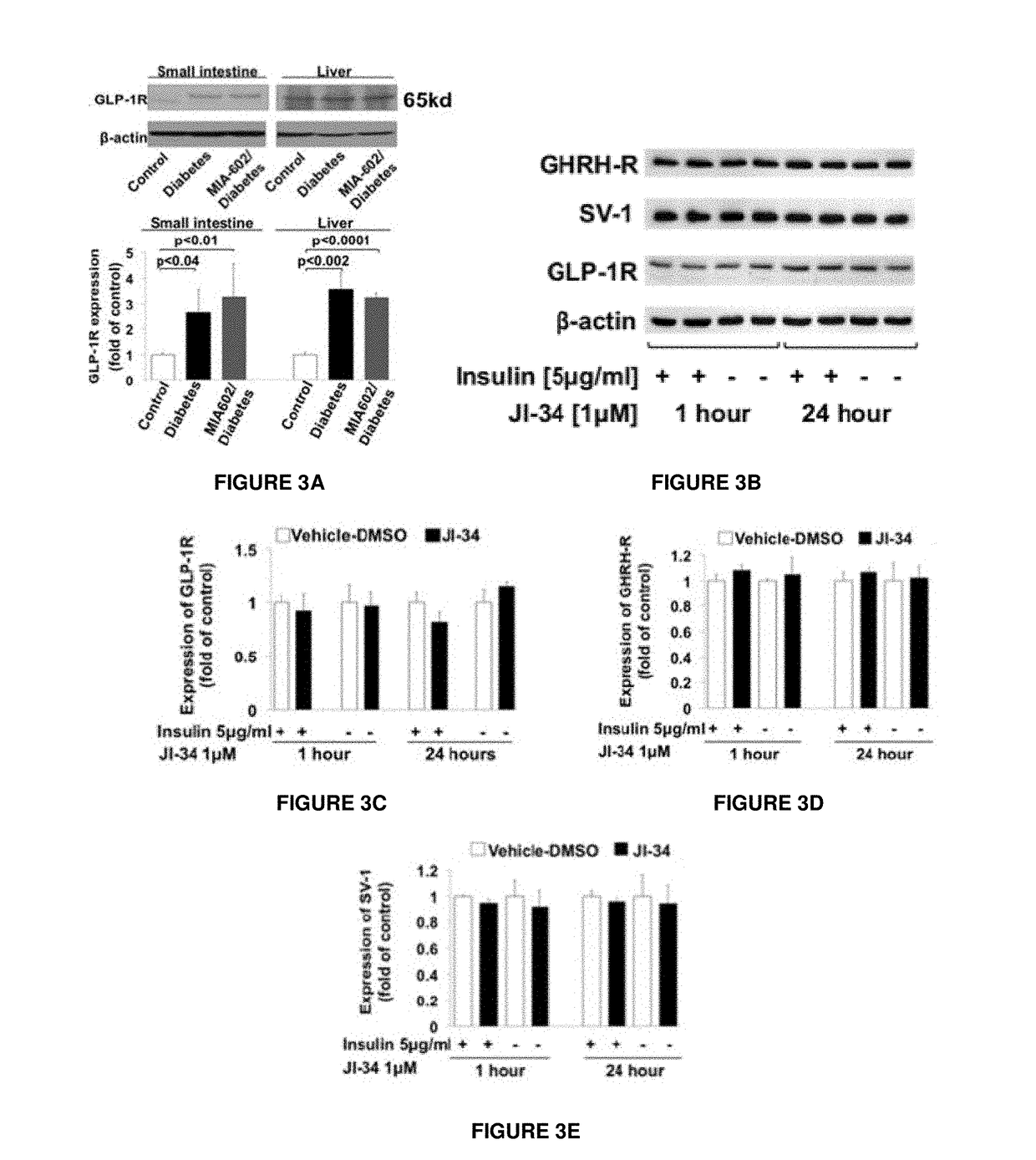Materials and Methods of Treating Dyslipidemia
a dyslipidemia and material technology, applied in the field of materials and methods of treating dyslipidemia, can solve the problems of limited benefit and directed towards diabetic dyslipidemia
- Summary
- Abstract
- Description
- Claims
- Application Information
AI Technical Summary
Benefits of technology
Problems solved by technology
Method used
Image
Examples
example 1
and Methods
[0025]T1 Diabetes Animal Model. Wistar rats (male, 200-250 g, Envigo RMS, Inc.) were rendered diabetic with a single dose of streptozotocin (STZ, 50 mg / kg body weight, i.p.). Once rats became hyperglycemic (>350 mg / dl plasma glucose, usually 3-4 days post STZ injection), they were divided into two groups, with and without treatment with the GHRH antagonist MIA-602 (25 jag / kg / dose, s.c.) administered three times a week for 14 weeks after establishment of diabetes. Untreated animals received vehicle alone with the same regimen. Upon completion of the 14 weeks period, animals were placed in metabolic cages for 3 days for adaptation, allowing them free movement, water and food intake. During the entire experiment, rats were fed regular rat chow (Teklad Diet, Madison, Wis.) and received water ad libitum. On the third day in the metabolic cages, food and water intake was monitored for a period of 24 hours. 24-hour urine specimens were also collected, centrifuged at 400×g for 5 ...
example 2
n of GHRH Receptor is Increased in the Small Intestine of T1D Rats
[0039]T1D was induced in Wistar rats (male, 320-350 g) with intraperitoneal injection of a single dose of STZ (50 mg / kg body weight). The expression of GHRH receptors, the nominative pituitary phenotype and its bioactive splice variant, SV-1 receptor, has been demonstrated in several peripheral tissues, including lung, heart, intestine, colon and kidney (23,24). However, the potential functional role of GHRH receptors in the small intestine, a tissue crucially involved in chylomicron synthesis (25), has not been investigated during T1D. The entire small intestine was removed from rats, and its length was measured from the pylorus to the ileocecal junction. Averaged values were as follows: control: 96±17.1 cm; diabetes: 155.8±10.6 cm; and MIA-602-diabetes: 157.3±7.6 cm. The entire intestine was then divided into four segments, and the third and fourth distal segments (jejunum-ileum) were included for the protein evalua...
example 3
gonist Reduced Dyslipidemia in T1D Rats
[0040]The observed increased expression of GHRH receptors in the small intestine, as well as the relationship of the intestine to chylomicron synthesis, prompted the investigation into the effects of GHRH on lipid metabolism during T1D. In order to specifically test the effects of the GHRH antagonist, MIA-602, on metabolic and hormonal profiles, insulin was not administered during the study period. This avoided potentially confounding influences on chylomicron assembly in the enterocyte, on lipoprotein lipase activity in the vasculature of fat and muscle tissue (28,29), on hepatic uptake of chylomicrons or VLDL remnants (30) and on intra-islet glucagon secretion (31). As shown in Tables 1 and 2, treatment with MIA-602 did not affect intake of food or water, or 24-hour urine volume, in T1D rats.
TABLE 1Food and water intake, 24-h urine volume, and bodyweight from rats in metabolic cages24-hour urineFood intakeWater intakevolumeg / dayml / dayml / dayBo...
PUM
| Property | Measurement | Unit |
|---|---|---|
| Time | aaaaa | aaaaa |
| Angle | aaaaa | aaaaa |
| Angle | aaaaa | aaaaa |
Abstract
Description
Claims
Application Information
 Login to View More
Login to View More - R&D
- Intellectual Property
- Life Sciences
- Materials
- Tech Scout
- Unparalleled Data Quality
- Higher Quality Content
- 60% Fewer Hallucinations
Browse by: Latest US Patents, China's latest patents, Technical Efficacy Thesaurus, Application Domain, Technology Topic, Popular Technical Reports.
© 2025 PatSnap. All rights reserved.Legal|Privacy policy|Modern Slavery Act Transparency Statement|Sitemap|About US| Contact US: help@patsnap.com



